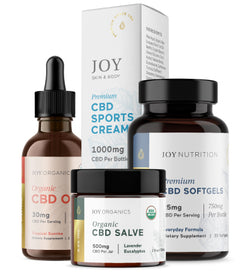
We all know that eating a well-balanced diet full of fruits and veggies can seriously benefit mental and physical health.
But did you know that consuming a wide variety of different fruits and veggies can actually maximize the health benefits plant foods contain?
That’s right.
Eat a wider diversity of healthy plant foods and you’ll reap more wellbeing benefits.
Boost Your Health with Plant Diversity
“Plant diversity” has become a bit of a buzzword in the health and wellness world, primarily for its benefits on gut health. Experts say plant diversity and gut health go hand-in-hand. What’s good for the gut is good for the body and brain.
This is because gut health impacts pretty much everything—including immunity, mood, hormone regulation and more. Experts are now discovering that consuming a diverse range of plant foods is a serious boon for gut microbiome health. Composed of trillions of healthy bacteria, the gut microbiome requires balance to properly regulate immunity, hormone balance, mood, digestion, and more.
One of the best ways to boost gut microbiome health balance?
Eat a wider variety of plant foods. Yes, it’s really that simple. A healthy gut is dependent on dietary diversity. And when you consume a diverse range of plant foods, you get various types of fiber and phytochemical compounds with antioxidant and anti-inflammatory properties that significantly contribute to gut health.
Just how much diversity in the diet are we talking?
Quite a bit, actually. It’s recommended to try to consume at least 30 different plant foods each week. While doing so might sound impossible, it’s actually quite simple.
How to Increase Plant Diversity in Your Diet
Mixing and matching foods from the following plant food groups can make diversifying your diet a lot less daunting.
- Whole Grains: Rolled oats, quinoa, brown rice, barley.
- Legumes: Beans (garbanzo, black, kidney, pinto), lentils, peas.
- Nuts and Seeds: Almonds, walnuts, pistachios, pecans, nut butters.
- Vegetables: Broccoli, cauliflower, Brussels sprouts, peppers, asparagus, beets.
- Fruits: Berries, apples, avocado, bananas, kiwi, citrus fruits.
- Herbs and Spices: Turmeric, cumin, cinnamon, ginger, cloves, holy basil, peppermint.
When you break it down to a few different categories like this that each contain a lengthy list of various options (much more than the examples we’ve listed here), diversifying your diet doesn’t have to be so difficult. Rather than restriction, it’s all about enhancing the healthy choices you’re likely already making.
Incorporating plant diversity into your diet really just means adding more fruits, more veggies, various spices, different herbs and an assortment of grains. Diversifying your diet doesn’t just improve gut health—it’s also an awesome way to try new foods and create new dishes you wouldn’t have otherwise considered.
How Plant Diversity Supports Gut Health
How exactly does a diversity of plant foods help improve the health of your gut? It mostly comes down to the diverse range of fiber different plant foods contain. There’s two types of fiber the body needs: soluble and insoluble.
Soluble fiber (found in oats, beans, peas, carrots, apples, citrus, sweet potatoes, broccoli): Absorbs water during digestion and forms a gel, which helps lubricate the stool and decrease cholesterol and glucose levels.
Insoluble fiber (found in wheat, brown rice, cauliflower, green beans, fruit and veggie seeds, nuts): Stays unchanged during digestion, helping to add bulk to the stool, aid in regularity and prevent constipation.
When you consume a diverse range of foods that contain both fiber types, you offer the body the building blocks it needs to maintain a diverse microbiome in the gut.
Think of it like this: Each plant food has its own unique fiber types that feed unique microbes in the gut. It’s this diversity of various fibers that allows the gut microbiome to thrive, which ultimately allows our health to thrive.
What Does This Look Like, Practically?
Diversifying your diet is easier than you might think—especially when you realize it simply involves adding more healthy foods. If you already eat a healthy diet, it’s as simple as making a few minor adjustments and trying new things.
Think variety. How many different healthy foods can you combine throughout the day to increase the types of foods you’re consuming? Following are a few ideas to get you started:
- Rich with a diversity of fruits and spices, slow-cooked oats—with apples, cinnamon, and ginger, topped with unsweetened Greek yogurt—are a simple way to start the day while supporting gut health.
- Think about adding a variety of beans—such as kidney, black, and garbanzo—to your favorite chili recipe instead of just one type.
- Incorporate different plant foods into weekly salads—possibly adding some quinoa to your kale and mandarin salad before topping with hemp seeds.
Diversify your palate—by diversifying your plate—by adding different plant foods to tried-and-true recipes, or trying new recipes with plant diversity . Doing so won’t just increase your culinary creativity, it will also balance your gut health and boost your wellbeing.
Hannah Smith is Joy Organics Director of Communications. She is driven by her passion for providing clear and accessible wellness and CBD education. In 2015, she received her BA in Media, Culture and the Arts from The King’s College in New York City and before Joy Organics, worked as writer and photographer in the Middle East and North Africa. Her work has been featured on Forbes, Vice, Vox, Denver Post, and the Coloradoan.









Join In On The Conversation
Your email address will not be published. Required fields are marked *